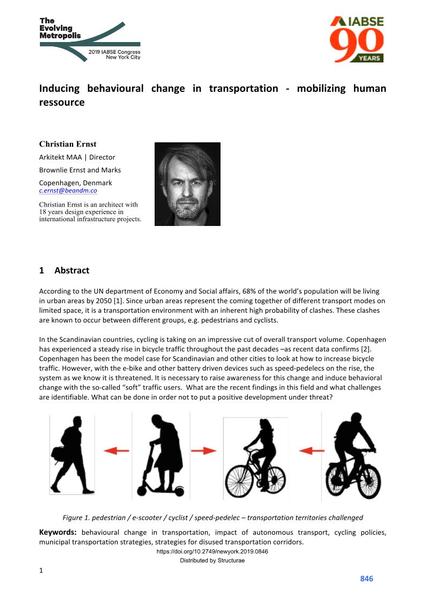Inducing behavioural change in transportation - mobilizing human ressource

|
|
|||||||||||
Détails bibliographiques
| Auteur(s): |
Christian Ernst
(Brownlie Ernst and Marks)
|
||||
|---|---|---|---|---|---|
| Médium: | papier de conférence | ||||
| Langue(s): | anglais | ||||
| Conférence: | IABSE Congress: The Evolving Metropolis, New York, NY, USA, 4-6 September 2019 | ||||
| Publié dans: | The Evolving Metropolis | ||||
|
|||||
| Page(s): | 846-849 | ||||
| Nombre total de pages (du PDF): | 4 | ||||
| DOI: | 10.2749/newyork.2019.0846 | ||||
| Abstrait: |
According to the UN department of Economy and Social affairs, 68% of the world’s population will be living in urban areas by 2050 [1]. Since urban areas represent the coming together of different transport modes on limited space, it is a transportation environment with an inherent high probability of clashes. These clashes are known to occur between different groups, e.g. pedestrians and cyclists. In the Scandinavian countries, cycling is taking on an impressive cut of overall transport volume. Copenhagen has experienced a steady rise in bicycle traffic throughout the past decades –as recent data confirms [2]. Copenhagen has been the model case for Scandinavian and other cities to look at how to increase bicycle traffic. However, with the e-bike and other battery driven devices such as speed-pedelecs on the rise, the system as we know it is threatened. It is necessary to raise awareness for this change and induce behavioral change with the so-called “soft” traffic users. What are the recent findings in this field and what challenges are identifiable. What can be done in order not to put a positive development under threat? |
||||
